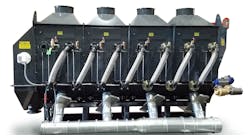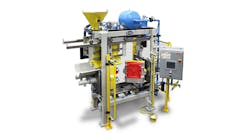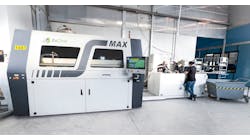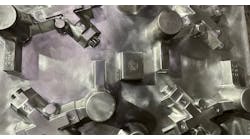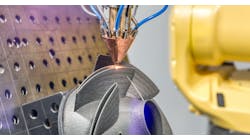Investment casting has been used worldwide for thousands of years to form a range of parts, establishing the basis for a variety of applications, and industries. Traditionally, this process requires creating a mold into which a molten alloy can be poured. The workflows required to manufacture these molds have remained largely the same since the start of the Industrial Revolution.
Now, due to relatively recent advancements in the field of additive manufacturing (AM), what started as a method for delivering simple, three-dimensional prototypes has evolved into an effective process for supplying multiple industries, including investment casting foundries. Additive Manufacturing, sometimes called 3D Printing, is used today to shorten the time for everything from the product development to the manufacturing of the final components. It’s a new manufacturing process that allows designers and engineers to rapidly iterate a part’s fit, form, and function before initiating manufacturing of those same components. And, the scope of applications is growing due to continuing advances in software, hardware, and materials.
Transformative power. One of the most impactful changes Additive Manufacturing has brought to investment casting is the ability to skip the expensive process of machining injection-molding tools for wax patterns. Thanks to advanced software, hardware, and materials, foundries can proceed directly from the CAD to the pattern, saving time and money for everyone involved. This sequence is referred to as “tool-less” pattern creation, and it has opened up various applications and development cycles that were previously too cost-prohibitive to explore.
Another aspect of tool-less pattern creation is the speed at which these patterns can be produced. Traditionally, the lead time for a CNC-machined, metal injection tool for a wax pattern is up to two weeks, or even more. However, with the advent of AM patterns, the production can be done in hours or days. This drastic increase in speed not only allows suppliers to deliver products faster but, combined with tool-less pattern creation, allows engineers to iterate their designs faster. This ensures the final designs will perform more reliably -- and it means that the finished parts can be certified faster.
This so-called “digital foundry” has changed the way many manufacturers operate and structure their development cycles. Several aerospace firms have adopted faster and more aggressive engineering cycles due to the time and cost savings afforded by additive-manufactured patterns. Their development teams have embraced the Silicon Valley mentality of “move fast and break things'' – which in manufacturing is only achievable because of AM.
As the time to go from CAD to a casting becomes a critical factor for many projects, so will the demand for faster turnaround times for the castings. There have been several circumstances where the designs of components have evolved so rapidly that multiple iterations have been created and tested within a week, creating development scenario that would not have been possible without AM.
The possibilities revealed by additive-manufacturing patterns allow for greater design freedom too. Components that have always been assembled from multiple parts now can be designed as a single object, and such objects can be far more complex than what was achievable previously.
No longer limited to the shapes that can be produced using a CNC machine, designers and engineers now create a wide variety of new designs -- from complex injection manifolds with conformal water jackets that operate longer at higher temperatures, to advanced part consolidation techniques that save aerospace companies time and money in the cost of assembly for complex components and in advanced weight reduction.
One of the best aspects of using AM to support investment casting is the ability to create components and designs in materials that were not traditionally available due to limitations in the manufacturing process. Cutting-edge, generative design techniques like “topology optimization” may be limited by both the size of the machines and the alloys available to metal additive processes. Inversely, traditional investment casting workflows do not easily allow for creation of wax patterns at the level of complexity required for these designs. However, by adopting additive manufacturing and investment casting together, foundries have been able to achieve the best of both possibilities: designs that distinguish from their competitors are possible while using a reliable and predictable casting process, and for any specified alloy.
Not only has additive manufacturing opened up new design possibilities for investment casting, but the efficient use of material in the creation of the patterns means they are easier to handle than traditional wax patterns. Comprised mostly of air, these additively manufactured patterns can easily be lifted by one person and moved quickly across a shop floor, or easily lifted by an automated shelling system. Reducing the loads carried by robots can extend the service life of those systems or allow the same job to be done by a less expensive machine. Finally, lightweight parts also are easy to ship and can be transported almost anywhere if a printer is not available.
Looking forward. As AM solutions grow and evolve, the further integration of printing technologies, material science, and software tools will continue to offer an expanding portfolio of solutions that support additive manufacturing of patterns. Additionally, as additive processes improve, the time and cost to produce a pattern will decrease, so investment casters and other manufacturers can do more with fewer resources.
Driving the cause of “more with less” is a generation of designers and engineers who have grown up in a world where AM is a standard manufacturing process. Many of the parts they are engineering now are no longer limited to the tooling constraints that have been standard for investment casting, and as their efforts progress, designs based in Additive Manufacturing will grow in demand -- and the benefits of a digital foundry will become clearer.
Evan Kuester is a Senior Advanced Applications Engineer with 3D Systems. Contact him at evan.kuester@3dsystems.com or visit www.3Dsystems.com.




